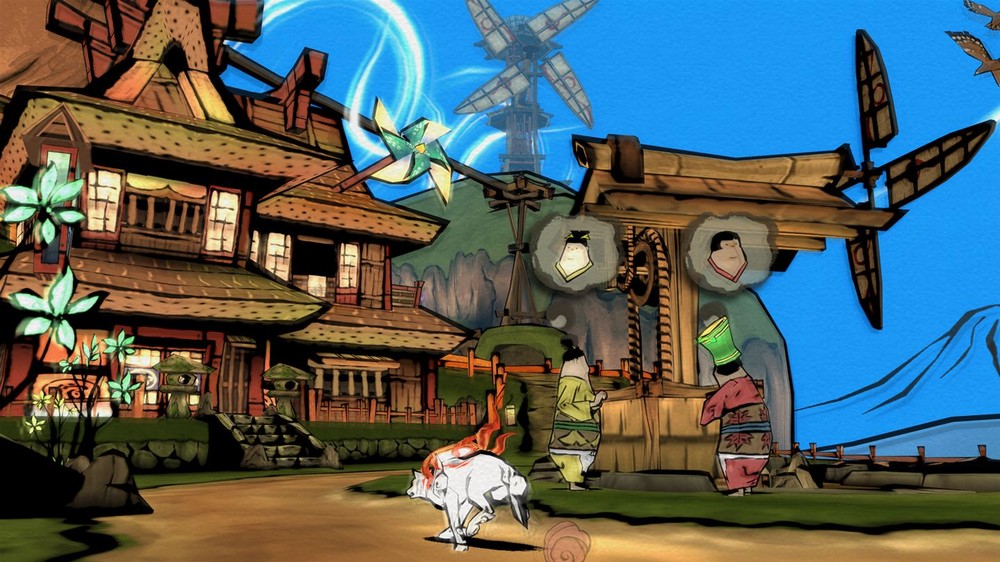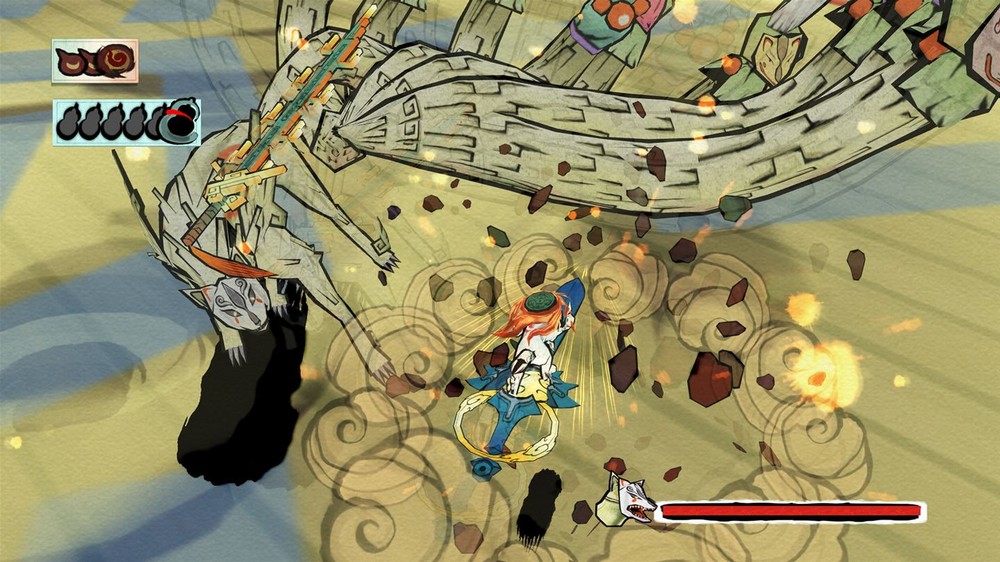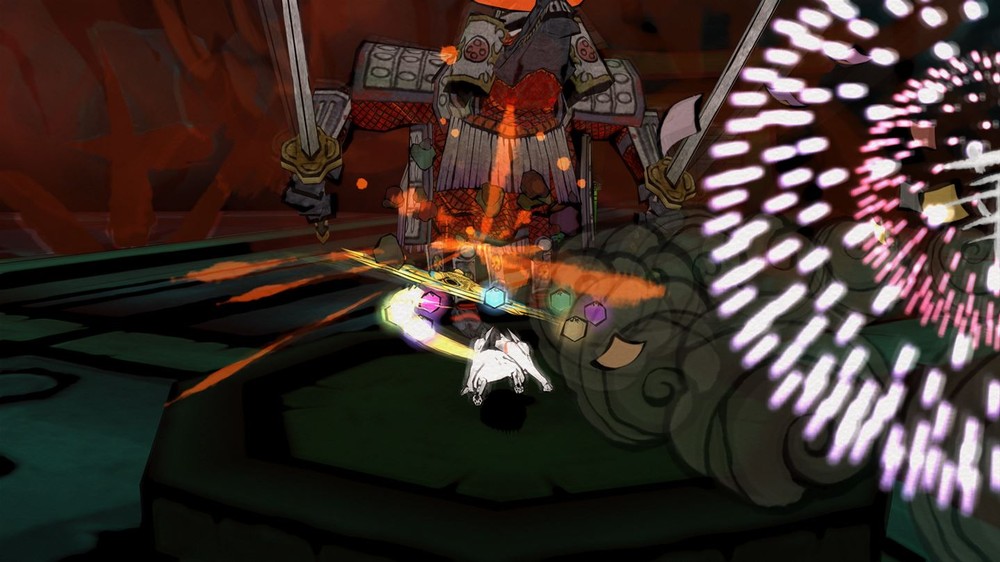In the mid-2000’s, there was the feeling that game design and theory were evolving. At the tail end of the sixth generation of hardware and the dawn of the seventh, developers were taking artistic risks, as well as pushing forward previously established genres. One of the studios leading the pack during this time was Clover. They only had a handful of titles to their names before disbanding, but many of them were highly influential- the biggest one of which arguably being the original release of Okami.
Okami never really rose above being a cult hit, and that’s unfortunate. For the time it was released in, the game was in a league of its own. The visuals were jaw-dropping, featuring a cel-shaded watercolor and ink look that had never been seen before. The gameplay was a tight, well-designed throwback to the glory days of action/RPG exploration titles. In a time when Zelda-likes were few and far between, Okami was a breath of fresh air.
While not much has changed since the last time Okami was re-released for the PS3, and this version, the game remains absolutely gorgeous. Despite it being more than a decade old at this point, Okami is still able to hold its own against most modern titles with an artistic flair. The world is well-designed and compelling visually, making you want to set off in exploration. Enemies and NPC’s are well-realized and unique, and watching the world be affected by your powers and abilities are endlessly watchable.
The audio design of Okami is equally impressive. The score is soothing and engaging in equal measure, and aids in immersion perfectly without pulling the player out of the moment. Gameplay remains solid, with the biggest draw being the brush stroke moments where you pause the action and paint over the screen for various attacks and in order to solve puzzles. One issue I had was I expected the mechanic to change slightly thanks to the PS4’s trackpad, which seemed like the perfect tool for making brush strokes on screen. While this isn’t a deal-breaker, it was unfortunate not to see the device implemented.
If there was any other drawback to this modern release of Okami, it’s in the controls and camera. Put bluntly, they feel dated. You never really feel like you have the freedom and fluidity you need to handle any given situation or look in the direction you want to look in. Basically, you have to surrender control to what the game wants you to see, lest you fight with it for the majority of your time spent with Okami.
Some players may note that the game opens slow, and often has lengthy cutscenes and dialog exchanges that can bog down the experience. While these issues are certainly noticeable, I never really had a problem with them, as I’ve seen similar design philosophies applied to RPG and similar games over the years. It’s a deep game that requires investment on the part of the players. If your attention span tends to drift, at least you can skip this time around- back on the PS2, most of these cutscenes were unskippable. Trust me, you’ve got it way easier this time around.
Still, all of this issues are ultimately small nitpicks. The game as a whole is such a strong, enjoyable experience that any reservations or complaints pale when compared to the whole package. Okami HD is an excellent release, and if you’ve never had the pleasure of playing through it for yourself, now is as good a time as ever.













